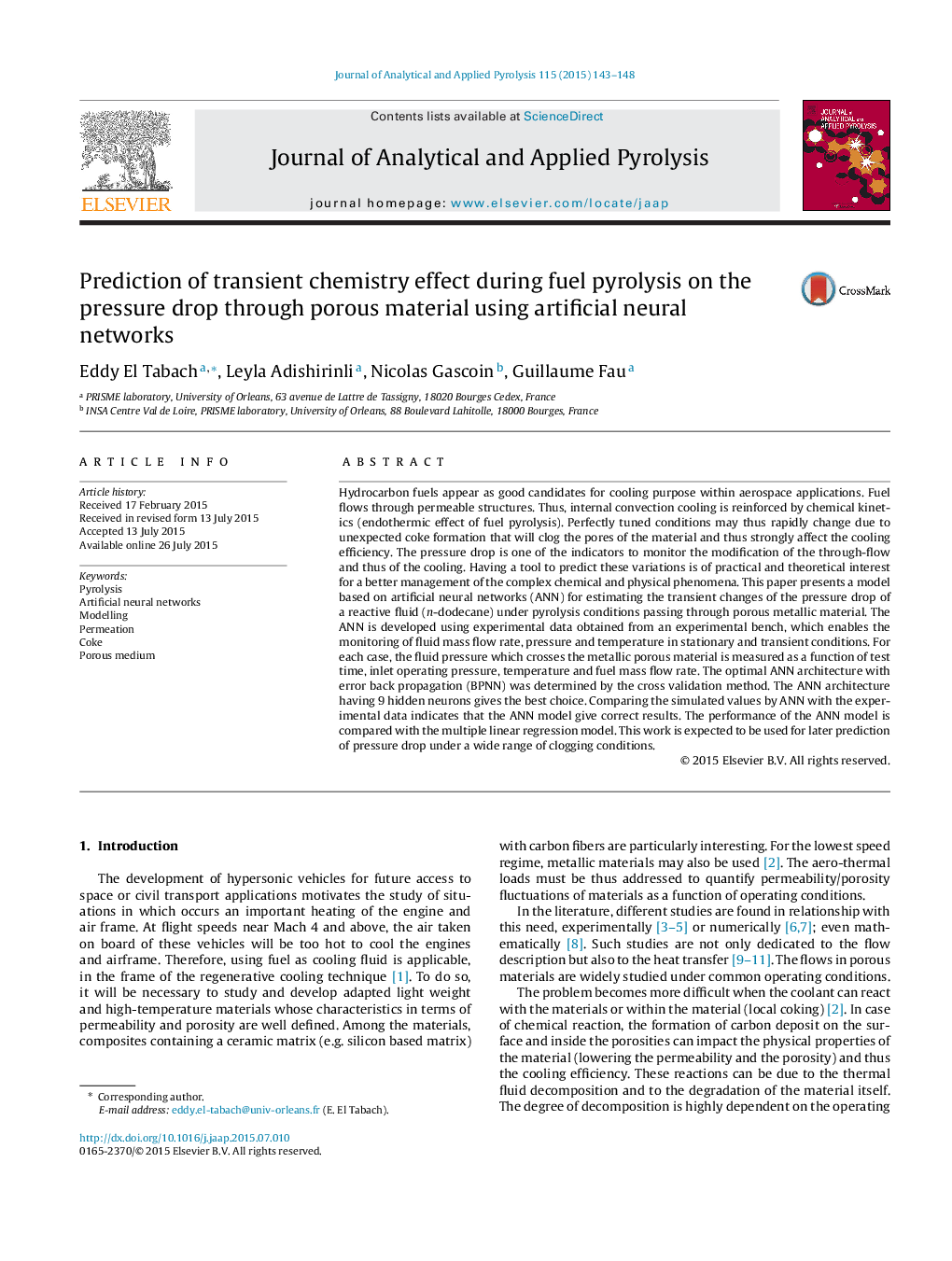| Article ID | Journal | Published Year | Pages | File Type |
|---|---|---|---|---|
| 1197087 | Journal of Analytical and Applied Pyrolysis | 2015 | 6 Pages |
•We modeled the transient pressure drop of n-dodecane under pyrolysis conditions.•We found a good agreement between the numerical results and the experimental data.•We found that the developed model is able to reproduce physical variations.•The model has been applied successfully on a series of examples.
Hydrocarbon fuels appear as good candidates for cooling purpose within aerospace applications. Fuel flows through permeable structures. Thus, internal convection cooling is reinforced by chemical kinetics (endothermic effect of fuel pyrolysis). Perfectly tuned conditions may thus rapidly change due to unexpected coke formation that will clog the pores of the material and thus strongly affect the cooling efficiency. The pressure drop is one of the indicators to monitor the modification of the through-flow and thus of the cooling. Having a tool to predict these variations is of practical and theoretical interest for a better management of the complex chemical and physical phenomena. This paper presents a model based on artificial neural networks (ANN) for estimating the transient changes of the pressure drop of a reactive fluid (n-dodecane) under pyrolysis conditions passing through porous metallic material. The ANN is developed using experimental data obtained from an experimental bench, which enables the monitoring of fluid mass flow rate, pressure and temperature in stationary and transient conditions. For each case, the fluid pressure which crosses the metallic porous material is measured as a function of test time, inlet operating pressure, temperature and fuel mass flow rate. The optimal ANN architecture with error back propagation (BPNN) was determined by the cross validation method. The ANN architecture having 9 hidden neurons gives the best choice. Comparing the simulated values by ANN with the experimental data indicates that the ANN model give correct results. The performance of the ANN model is compared with the multiple linear regression model. This work is expected to be used for later prediction of pressure drop under a wide range of clogging conditions.
